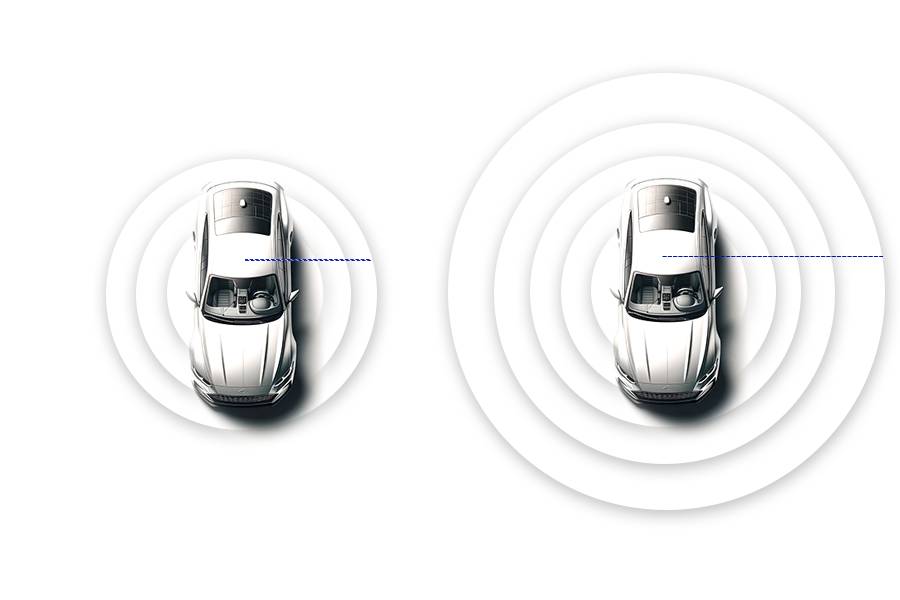Subscribe to Our Social Media For Prompt Post
Simple Comparison between 905nm and 1.5μm LiDAR
Let's simplify and clarify the comparison between 905nm and 1550/1535nm LiDAR systems:
|
Feature |
905nm LiDAR |
1550/1535nm LiDAR |
| Safety for Eyes | - Safer but with limits on power for safety. | - Very safe, allows for higher power use. |
| Range | - Can have limited range due to safety. | - Longer range because it can use more power safely. |
| Performance in Weather | - More affected by sunlight and weather. | - Performs better in bad weather and is less affected by sunlight. |
| Cost | - Cheaper, components are more common. | - More expensive, uses specialized components. |
| Best Used For | - Cost-sensitive applications with moderate needs. | - High-end uses like autonomous driving need long-range and safety. |
The comparison between 1550/1535nm and 905nm LiDAR systems highlights several advantages of using the longer wavelength (1550/1535nm) technology, particularly in terms of safety, range, and performance in various environmental conditions. These advantages make 1550/1535nm LiDAR systems particularly suited for applications requiring high precision and reliability, such as autonomous driving. Here's a detailed look at these advantages:
1. Enhanced Eye Safety
The most significant advantage of 1550/1535nm LiDAR systems is their enhanced safety for human eyes. The longer wavelengths fall into a category that is absorbed more efficiently by the cornea and lens of the eye, preventing the light from reaching the sensitive retina. This characteristic allows these systems to operate at higher power levels while staying within safe exposure limits, making them ideal for applications that require high-performance LiDAR systems without compromising human safety.

2. Longer Detection Range
Thanks to the ability to emit at higher power safely, 1550/1535nm LiDAR systems can achieve a longer detection range. This is crucial for autonomous vehicles, which need to detect objects from a distance to make timely decisions. The extended range provided by these wavelengths ensures better anticipation and reaction capabilities, enhancing the overall safety and efficiency of autonomous navigation systems.

3. Improved Performance in Adverse Weather Conditions
LiDAR systems operating at 1550/1535nm wavelengths demonstrate better performance in adverse weather conditions, such as fog, rain, or dust. These longer wavelengths can penetrate atmospheric particles more effectively than shorter wavelengths, maintaining functionality and reliability when visibility is poor. This capability is essential for the consistent performance of autonomous systems, regardless of environmental conditions.
4. Reduced Interference from Sunlight and Other Light Sources
Another advantage of 1550/1535nm LiDAR is its reduced sensitivity to interference from ambient light, including sunlight. The specific wavelengths used by these systems are less common in natural and artificial light sources, which minimizes the risk of interference that could affect the accuracy of LiDAR's environmental mapping. This feature is particularly valuable in scenarios where precise detection and mapping are critical.
5. Material Penetration
While not a primary consideration for all applications, the longer wavelengths of 1550/1535nm LiDAR systems can offer slightly different interactions with certain materials, potentially providing advantages in specific use cases where penetrating light through particulates or surfaces (to a certain extent) can be beneficial.
Despite these advantages, the choice between 1550/1535nm and 905nm LiDAR systems also involves considerations of cost and application requirements. While 1550/1535nm systems offer superior performance and safety, they are generally more expensive due to the complexity and lower production volumes of their components. Therefore, the decision to use 1550/1535nm LiDAR technology often depends on the specific needs of the application, including the required range, safety considerations, environmental conditions, and budget constraints.
Further Reading:
1.Uusitalo, T., Viheriälä, J., Virtanen, H., Hanhinen, S., Hytönen, R., Lyytikäinen, J., & Guina, M. (2022). High peak power tapered RWG laser diodes for eye-safe LIDAR applications around 1.5 μm wavelength.[Link]
Abstract: High peak power tapered RWG laser diodes for eye-safe LIDAR applications around 1.5 μm wavelength" discusses developing high peak power and brightness eye-safe lasers for automotive LIDAR, achieving state-of-the-art peak power with potential for further improvements.
2.Dai, Z., Wolf, A., Ley, P.-P., Glück, T., Sundermeier, M., & Lachmayer, R. (2022). Requirements for Automotive LiDAR Systems. Sensors (Basel, Switzerland), 22.[Link]
Abstract: Requirements for Automotive LiDAR Systems" analyzes key LiDAR metrics including detection range, field of view, angular resolution, and laser safety, emphasizing the technical requirements for automotive applications ”
3.Shang, X., Xia, H., Dou, X., Shangguan, M., Li, M., Wang, C., Qiu, J., Zhao, L., & Lin, S. (2017). Adaptive inversion algorithm for 1.5μm visibility lidar incorporating in situ Angstrom wavelength exponent. Optics Communications.[Link]
Abstract: Adaptive inversion algorithm for 1.5μm visibility lidar incorporating in situ Angstrom wavelength exponent" presents an eye-safe 1.5μm visibility lidar for crowded places, with an adaptive inversion algorithm that shows high accuracy and stability (Shang et al., 2017).
4.Zhu, X., & Elgin, D. (2015). Laser safety in design of near-infrared scanning LIDARs.[Link]
Abstract: Laser safety in design of near-infrared scanning LIDARs" discusses laser safety considerations in designing eye-safe scanning LIDARs, indicating that careful parameter selection is crucial for ensuring safety (Zhu & Elgin, 2015).
5.Beuth, T., Thiel, D., & Erfurth, M. G. (2018). The hazard of accommodation and scanning LIDARs.[Link]
Abstract: The hazard of accommodation and scanning LIDARs" examines laser safety hazards associated with automotive LIDAR sensors, suggesting a need to reconsider laser safety evaluations for complex systems consisting of multiple LIDAR sensors (Beuth et al., 2018).
Need some help with the laser solution?
Post time: Mar-15-2024
